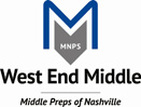Collaboration Spotlight: Metro Data Coordinator's Meeting Featuring MNPS Collaborative Inquiry12/1/2017
 On November 16, 2017, Margie Johnson and Brad Redmond shared MNPS' Data-Informed Decision Making Ecosystem and how it was used to improve how MNPS uses attendance data for making informed decisions. To teach participants about the heart of the ecosystem, which is a culture of collaborative inquiry, participants engaged in the collaborative inquiry process by looking at attendance data and making recommendations for improving it. Using this process, data conversations were fostered and several departments approached us about having continued conversations for supporting student success. If you'd like to learn more about the collaborative inquiry process used during this meeting, check out the video recording at: https://youtu.be/j-MtCuusP3Q. You are also welcome to access the resources, such as the PowerPoint, used during the meeting at: www.mnpscollaboration.org/metro-data-coord-meeting-nov-16-2017.html If you have a collaborative story to share or would like to request assistance, please contact Margie Johnson at margie.johnson@mnps.org. References: Johnson, M. (in press). Empowering educators to make data-informed decisions: A district’s journey of effective data use. In E. Mense and M. Crain-Dorough (Eds.), Data leadership for K-12 schools in a time of accountability. Hershey, PA: IGI Global. Johnson, M. (2016). Experience from the field. In J. Rankin, How to make data work: A guide for educational leaders (pp. 171). New York City, NY: Routledge.
3 Comments
I have been fortunate to be on a learning journey with the MNPS Exceptional Education Department. This fall, we have been using the collaborative inquiry process to use multiple sources of data to inform their work for supporting student success throughout MNPS. This learning journey is an example of leveraging professional expertise to support student success.
During the first session on September 20th, coaches worked in an assigned expert group and used a fishbone analysis to identify root issues. After a gallery walk for feedback from the entire group, each group identified one root issue to focus on this semester. In the second meeting on October 18th, expert groups participated in a data dive to inform their work. Multiple sources of data was used to inform the creation of action plans for their respective root issue. On November 15th, the groups convened to share their action plans. A critical friends protocol was used for feedback. Teams then had time to finish the creation of their plans, which will be presented to the MNPS Exceptional Education leadership team, and implemented next year. To read about their learning journey, go to: www.mnpscollaboration.org/exceptional-education-coaches.html If you have a collaborative story to share or would like to request assistance, please contact Margie Johnson at margie.johnson@mnps.org.
Thanks to the following middle schools and organizations that participated in the collaborative inquiry data dive.
The session began with an Activating and Engaging activity called Looking Back...Looking Ahead (Lipton & Wellman, 2011) where participants shared how family involvement in schools has changed from the past to now and then their vision for future family involvement.
We Organized and Integrated the observations using the Traffic Light protocol (Lipton & Wellman, 2011) to discuss actions to stop, continue, and start.
References:
Learning Hero. (2017, August). Parents 2017: Unleashing their power & potential. New York, NY: Learning Heroes. Lipton, L. & Wellman, B. (2011). Groups at work: Strategies and structures for professional learning. Charlotte, VT: MiraVia, LLC.  You might see that acronym BHAG and be thinking......"what in the world does that mean?" Well, Cole Elementary has brought BHAGs to their school (Big Hairy Audacious Goals) as a way of having "unrelenting focus, clarity of thought, consistent communication, alignment of resources, innovation, discipline, and teamwork" (Sparks, 2007, p. 13). Cole Elementary started the year with a literacy BHAG and decided to create a BHAG for math. To create the math BHAG, they used the collaborative inquiry process during grade level team meetings to get teacher voice about the math BHAG. Once the teachers' BHAGs were compiled, the leadership team met to finalize the math BHAG. Then, on November 16th, grade level teams are meeting to collaboratively develop action plans for achieving their math BHAG. To read more about their BHAG work, go here: www.mnpscollaboration.org/cole-elem-bhag-fall-2017 Cole Elementary also participated in the SEL Culture and Climate Walk-through. On November 6th, the collaborative inquiry process was used to help them analyzed the data and discuss actions they might stop, continue, and start to continue working on the culture of the building. To learn more about that exciting work, go here: www.mnpscollaboration.org/cole-elem-culture-and-climate--2016.html If you have a collaborative story to share or would like to request assistance, please contact Margie Johnson at margie.johnson@mnps.org. Reference: Sparks, D. (2007). Leading for results: Transforming teaching, learning, and relationships in schools. Thousand Oaks, CA: Corwin Press. 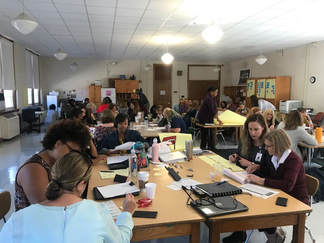 The Exceptional Education team began using the collaborative inquiry process in September for their coaches. The purpose of these sessions is to foster a culture of collaboration for supporting student success. Each group was assigned identified a goal for their work in September. During the October meeting, multiple sources of data were used to further inform their action plans. To learn about their work and the workshop, please go to www.mnpscollaboration.org/exceptional-education-coaches.html If you have a collaborative inquiry story or are interested in learning more, please contact Margie Johnson at margie.johnson@mnps.org. |
Email Subscription
Click HERE to subscribe to receive emails for the blog posts. Archives
February 2018
Categories
All
|
|||||||||||||||||||||||||||||||||||||||||||
- Home
-
Workshop Warehouse
- Collaborative Inquiry for Data Use Workshop (Got Data? Now What?)
- Fishbone and Logic Model Workshop Materials
- Innovation Configurations Materials
- Creating an Evaluation Plan
- Facilitating Collaborative Inquiry Workshop (Dr. Laura Lipton)
- Group Data Exploration (PLI 2016)
- Collaborative Inquiry Community of Practice
- JE Moss Elementary Leadership Team Meeting
- 2016 NCES STATS DC Presentations
- Una Elementary Leadership Team
- Haynes Middle Prep-August 1, 2016
- August 2, 2016--Jere Baxter Middle
- 2016 NTC Nashville Analytics Conference
- Glencliff ES Leadership Team--Sept. 15, 2016
- Haynes MS Leadership Team Culture and Climate Meeting--Sept 19, 2016
- Sept 27, 2016 Two Rivers Leadership Team Meeting
- Rose Park Culture and Climate--2016
- Two Rivers SIP Goal Setting--Sept 20, 2016
- Curriculum and Instruction Meeting--Sept. 30, 2016
- Two Rivers--October 10, 2016
- John Early Culture and Climate--2016
- CTE Cohort--October 11, 2016
- Apollo Middle Milestone Meeting
- Murrell--Culture and Climate 2016-2017
- Margaret Allen--Jan 4, 2017 Culture and Climate
- Head Magnet Middle--Jan 4, 2017
- Apollo Middle--Jan 10 & 25, 2017
- IT Creswell Vision and Mission
- Dr. Springer Literacy CoP
- Two Rivers SIP Process Feb & Mar 2017
- East Nashville SIP March 2017
- East Nashville Behavior Plan May2017
- Family Engagement Data Dive
- Leading Collaborative Inquiry
- DuPont Tyler Middle Vision and Mission
- Facilitating Collaborative Teams
- 2017 SEL Conference Culture and Climate Change
- JE Moss Elementary Leadership Team Meeting--2017
- Goodlettsville Middle Vision and Mission
- CTE Cohort--July 26, 2017
- Joelton Middle Vision and Mission
- Whites Creek High Freshman Academy Vision and Mission
- Goodlettsville Middle Poverty Simulation Follow-Up Meeting
- Exceptional Education Coaches
- Hull Jackson Montessori Poverty Simulation Follow-Up Meeting
- Central Office Poverty Simulation Follow-Up Meeting
- Jones Paideia Poverty Simulation Follow-Up Meeting
- Cole Elem BHAG Fall 2017
- Cole Elem Culture and Climate--2016
- NAZA Data Dive Nov 3, 2017
- Metro Data Coord Meeting Nov 16, 2017
- 2017 Learning Forward Workshop
- Two Rivers Dec 2017 Culture and Climate
- MNPS Learning Tech Jan 2018
- MNPS SE Quadrant Leadership Meeting Jan 2018
- Margaret Allen Middle Jan 2018 Culture and Climate
- MNPS Early Learning Jan 2018
- Lakeview Elementary Jan 2018
- Wright MS SIP Process Jan 2018
- Cane Ridge HS Student Data Chats Jan 2018
- Antioch Middle Spring 2018
- Whites Creek HS Feb 2018
- 2019 Wright MS Leadership PLC
- July 2019--JE Moss Elementary Leadership Team Meeting
- Collaboration Corner Blog
- MNPS Data Guides
- Meeting Structures and Strategies
- Feedback
- Collaborative Inquiry Working Group
- Reading List
- Home
-
Workshop Warehouse
- Collaborative Inquiry for Data Use Workshop (Got Data? Now What?)
- Fishbone and Logic Model Workshop Materials
- Innovation Configurations Materials
- Creating an Evaluation Plan
- Facilitating Collaborative Inquiry Workshop (Dr. Laura Lipton)
- Group Data Exploration (PLI 2016)
- Collaborative Inquiry Community of Practice
- JE Moss Elementary Leadership Team Meeting
- 2016 NCES STATS DC Presentations
- Una Elementary Leadership Team
- Haynes Middle Prep-August 1, 2016
- August 2, 2016--Jere Baxter Middle
- 2016 NTC Nashville Analytics Conference
- Glencliff ES Leadership Team--Sept. 15, 2016
- Haynes MS Leadership Team Culture and Climate Meeting--Sept 19, 2016
- Sept 27, 2016 Two Rivers Leadership Team Meeting
- Rose Park Culture and Climate--2016
- Two Rivers SIP Goal Setting--Sept 20, 2016
- Curriculum and Instruction Meeting--Sept. 30, 2016
- Two Rivers--October 10, 2016
- John Early Culture and Climate--2016
- CTE Cohort--October 11, 2016
- Apollo Middle Milestone Meeting
- Murrell--Culture and Climate 2016-2017
- Margaret Allen--Jan 4, 2017 Culture and Climate
- Head Magnet Middle--Jan 4, 2017
- Apollo Middle--Jan 10 & 25, 2017
- IT Creswell Vision and Mission
- Dr. Springer Literacy CoP
- Two Rivers SIP Process Feb & Mar 2017
- East Nashville SIP March 2017
- East Nashville Behavior Plan May2017
- Family Engagement Data Dive
- Leading Collaborative Inquiry
- DuPont Tyler Middle Vision and Mission
- Facilitating Collaborative Teams
- 2017 SEL Conference Culture and Climate Change
- JE Moss Elementary Leadership Team Meeting--2017
- Goodlettsville Middle Vision and Mission
- CTE Cohort--July 26, 2017
- Joelton Middle Vision and Mission
- Whites Creek High Freshman Academy Vision and Mission
- Goodlettsville Middle Poverty Simulation Follow-Up Meeting
- Exceptional Education Coaches
- Hull Jackson Montessori Poverty Simulation Follow-Up Meeting
- Central Office Poverty Simulation Follow-Up Meeting
- Jones Paideia Poverty Simulation Follow-Up Meeting
- Cole Elem BHAG Fall 2017
- Cole Elem Culture and Climate--2016
- NAZA Data Dive Nov 3, 2017
- Metro Data Coord Meeting Nov 16, 2017
- 2017 Learning Forward Workshop
- Two Rivers Dec 2017 Culture and Climate
- MNPS Learning Tech Jan 2018
- MNPS SE Quadrant Leadership Meeting Jan 2018
- Margaret Allen Middle Jan 2018 Culture and Climate
- MNPS Early Learning Jan 2018
- Lakeview Elementary Jan 2018
- Wright MS SIP Process Jan 2018
- Cane Ridge HS Student Data Chats Jan 2018
- Antioch Middle Spring 2018
- Whites Creek HS Feb 2018
- 2019 Wright MS Leadership PLC
- July 2019--JE Moss Elementary Leadership Team Meeting
- Collaboration Corner Blog
- MNPS Data Guides
- Meeting Structures and Strategies
- Feedback
- Collaborative Inquiry Working Group
- Reading List






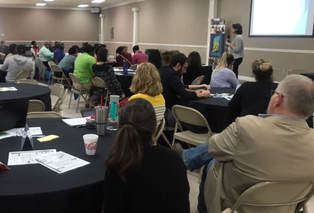
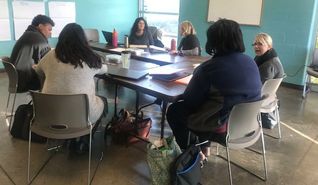



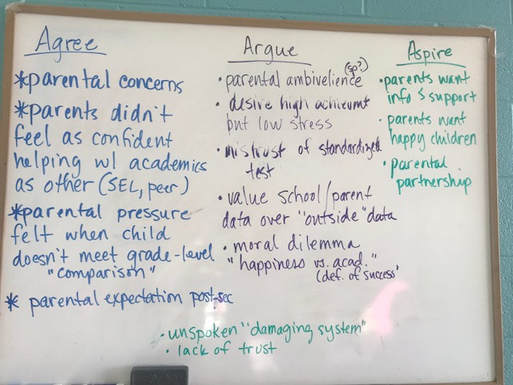


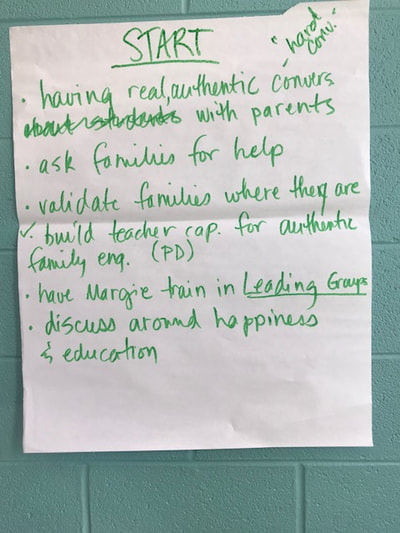
 RSS Feed
RSS Feed



